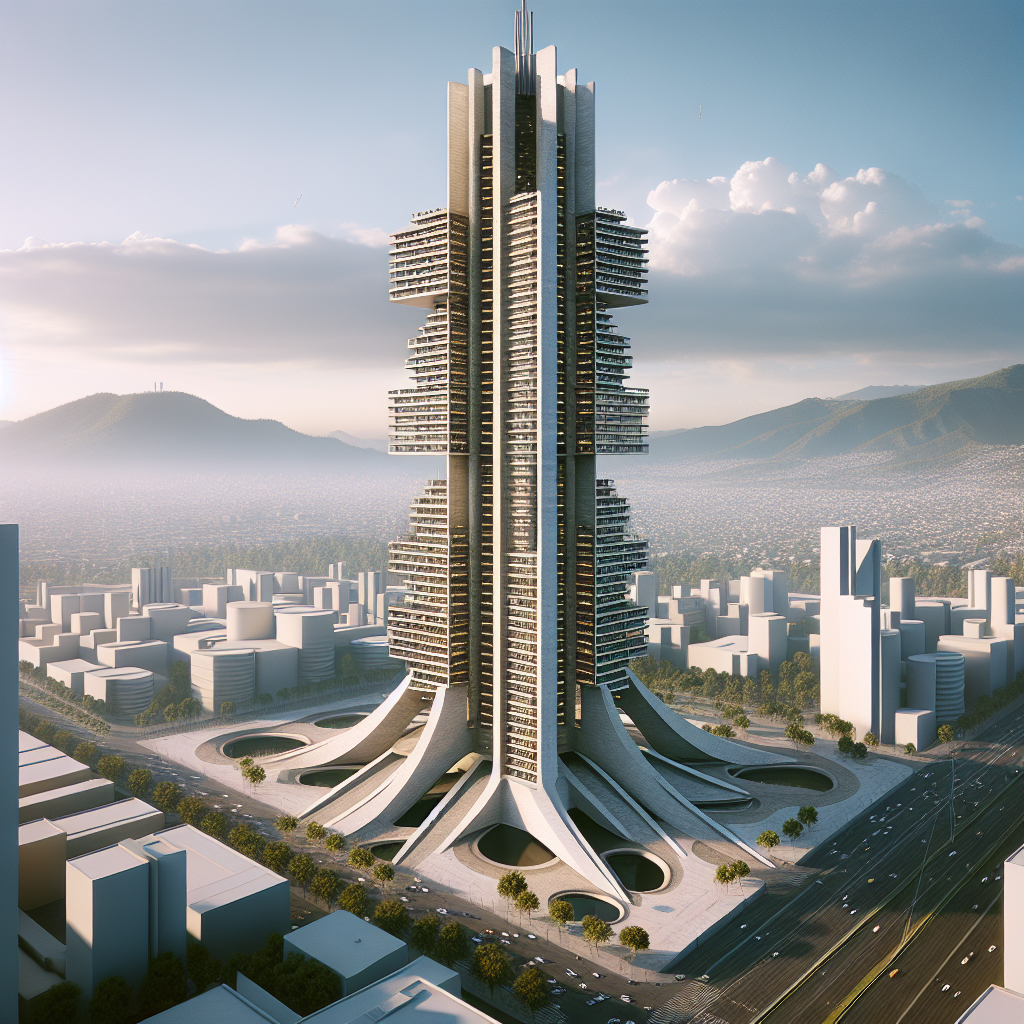The Iconic Towers of Mexico: Torres de Satélite
Imagine driving through the bustling streets of Mexico City and suddenly being greeted by a vibrant splash of color reaching towards the sky. This is the sight of the Torres de Satélite, a group of five monumental towers located in the Ciudad Satélite district of Naucalpan, just outside Mexico City. Designed by the renowned Mexican architect Luis Barragán, in collaboration with sculptor Mathias Goeritz and painter Jesús Reyes Ferreira, these towers were completed in 1958. They stand as a symbol of modernity and progress, marking the entrance to a new suburban development during a time when Mexico was experiencing rapid urban growth.
The Torres de Satélite are not just architectural marvels; they are a testament to the creative spirit of mid-20th century Mexico. Each tower is a different height and color, ranging from 30 to 52 meters tall, and painted in bold hues of red, blue, yellow, and white. This striking design was intended to reflect the optimism and forward-thinking attitude of the era. The towers were part of a larger vision to create a modern suburb that would accommodate the growing middle class, offering a new way of living away from the crowded city center.
While the Torres de Satélite are celebrated for their artistic and architectural significance, they also spark debate. Some critics argue that the towers, while visually stunning, are disconnected from the community they were meant to serve. They stand isolated on a busy highway, more of a landmark for passing motorists than a gathering place for residents. This raises questions about the role of public art and architecture in urban planning. Should such projects prioritize aesthetic appeal over functionality and community integration?
Supporters of the Torres de Satélite, however, see them as an essential part of Mexico's cultural heritage. They argue that the towers are a powerful symbol of the country's artistic innovation and its ability to blend tradition with modernity. The towers have become an iconic image, not just for Ciudad Satélite, but for Mexico as a whole. They are a reminder of a time when the country was looking towards the future with hope and ambition.
The debate over the Torres de Satélite reflects broader discussions about urban development and the role of public art. In a rapidly changing world, cities must balance the need for growth with the preservation of cultural identity. The towers serve as a reminder that architecture can be both a practical necessity and a form of artistic expression. They challenge us to think about how we can create spaces that are both beautiful and functional, that serve the needs of the community while also inspiring and uplifting.
For many, the Torres de Satélite are more than just a set of colorful towers. They are a symbol of Mexico's journey through the 20th century, a testament to the country's resilience and creativity. They remind us that even in the midst of rapid change, there is room for beauty and innovation. As we look to the future, the towers stand as a beacon of what is possible when art and architecture come together to shape the world around us.

